
Snowboarding
Embrace the Freedom of Snowboarding
Snowboarding is more than just a sport; it's a culture, a lifestyle, and an exhilarating way to experience the winter landscape. Combining elements of surfing, skateboarding, and skiing, snowboarding offers a unique sense of freedom and flow as you carve down snow-covered mountains. Originating in the 1960s and 70s, it quickly gained popularity for its rebellious spirit and emphasis on style and creativity.
From serene powder fields to challenging terrain parks, snowboarding caters to a wide range of preferences and skill levels. Whether you're drawn to the adrenaline rush of freestyle tricks, the grace of carving, or the tranquility of gliding through fresh snow, snowboarding provides an unparalleled connection with nature and a thrilling escape from the everyday. It's a sport that continuously evolves, with new techniques, equipment, and styles emerging, keeping it fresh and exciting for riders worldwide.
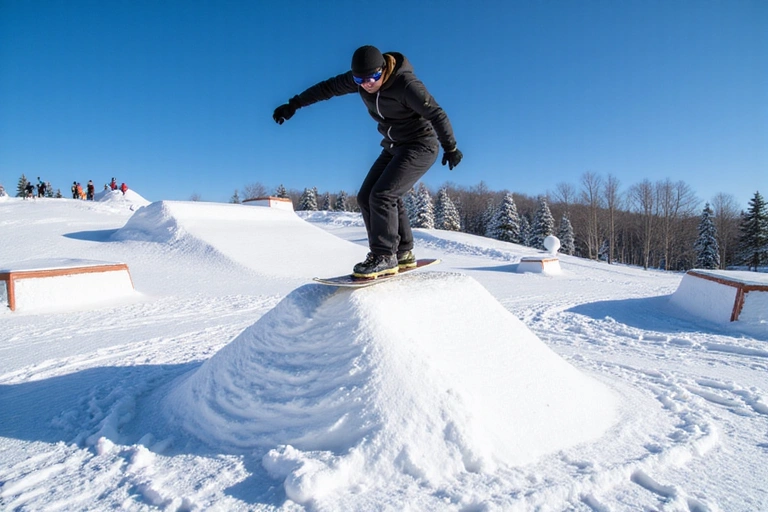
Many find the community aspect of snowboarding just as appealing as the sport itself. Shared chairlift rides, group sessions in the park, and post-shred camaraderie foster a vibrant and welcoming atmosphere. It's a sport that encourages self-expression and pushes boundaries, making every run down the mountain a unique adventure.
Essential Snowboarding Equipment
To fully enjoy and safely participate in snowboarding, having the right gear is crucial. Here's a breakdown of the essential equipment you'll need to hit the slopes:
- Snowboard: The primary piece of equipment, chosen based on your riding style (all-mountain, freestyle, freeride) and skill level. Boards vary in length, flex, and shape, influencing maneuverability and stability.
- Bindings: These connect your snowboard boots to the board. They are crucial for transmitting your movements directly to the board, allowing for precise control. Proper fit and adjustment are key.
- Snowboard Boots: Designed for comfort, support, and warmth, snowboard boots are stiffer than regular shoes to provide ankle support and efficient power transfer to the bindings. They come in various flex ratings.
- Helmet: A non-negotiable safety item. A helmet protects your head from impacts and provides warmth. Always choose a helmet that fits snugly and is certified for winter sports.
- Goggles: Essential for protecting your eyes from snow, wind, and harmful UV rays. Goggles also improve visibility in varying light conditions, with different lens tints suited for bright sun, overcast days, or low light.
- Snowboard Apparel: Layering is key. This includes a waterproof and breathable outer jacket and pants, insulating layers (fleece or down), and moisture-wicking base layers to keep you warm and dry. Don't forget waterproof gloves or mittens and warm socks.
- Wrist Guards (Optional but Recommended): Especially for beginners, wrist guards can prevent common wrist injuries during falls.
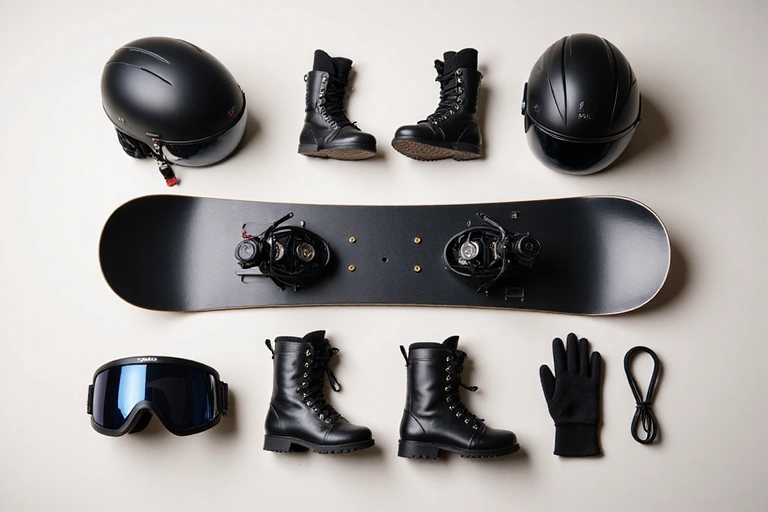
Investing in good quality equipment not only enhances your experience but also plays a significant role in your safety and progression in the sport. Many resorts offer rental equipment, which is a great option for beginners to try out different gear before committing to a purchase.
Snowboarding Skill Levels: A Progression Guide
Snowboarding offers a clear path for progression, allowing riders to continuously learn and master new techniques. Understanding the different skill levels can help you set realistic goals and enjoy your journey on the snow.
Beginner
As a beginner, your focus will be on getting comfortable with your board and the sensation of gliding. Start with professional lessons to learn the basics safely. Key milestones include learning to fall safely, mastering the "J-turn" or "falling leaf" to control speed, and eventually linking C-turns on gentle slopes. Patience and persistence are your best friends during this stage. Practice on green runs and focus on balance and board control.
Intermediate
Once you can confidently link turns on green and easy blue runs, you're an intermediate rider. At this level, you'll work on refining your carving technique, controlling speed and direction more precisely, and exploring varied terrain. This includes riding switch (with your non-dominant foot forward), venturing into moguls, and trying out small jumps or boxes in the terrain park. Focus on fluid transitions and maintaining speed.
Advanced
Advanced snowboarders are comfortable on all types of terrain, including steep black diamond runs, deep powder, and challenging terrain parks. This level involves specializing in areas like freestyle (jumps, rails, halfpipe), freeride (backcountry, natural features), or carving (high-speed, aggressive turns). Advanced riders possess excellent board control, adaptability, and an understanding of mountain safety, including avalanche awareness if venturing into the backcountry.
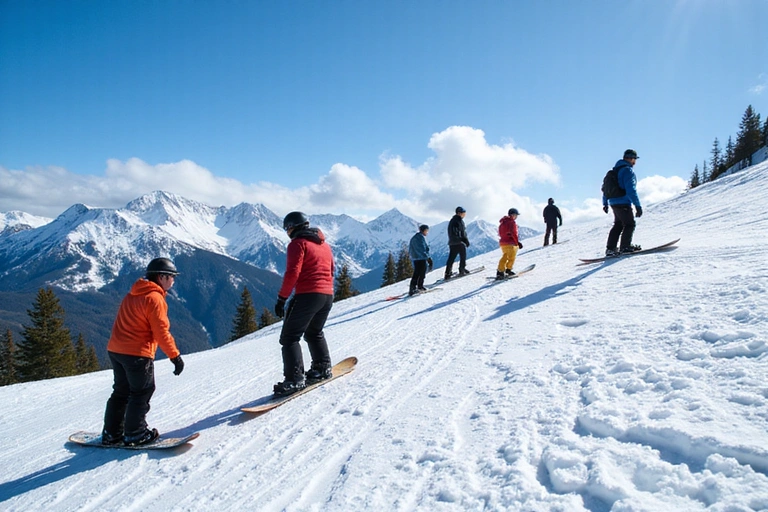
Remember that progression is personal, and there's no rush to reach the advanced level. The most important thing is to enjoy the process, stay safe, and continually challenge yourself.
Top Snowboarding Destinations in the USA
The United States boasts an incredible array of resorts perfect for snowboarding, offering diverse terrain, world-class parks, and abundant snowfall. Here are some of the premier locations to experience snowboarding:
- Colorado: Home to some of the most famous resorts, Colorado offers high-altitude powder and expansive terrain. Breckenridge is renowned for its vibrant town, diverse runs, and top-tier terrain parks. Keystone features A51 terrain park, one of the best in the country. Aspen Snowmass provides luxurious experiences and varied slopes.
- California: With its sunny days and deep Sierra Nevada snowpacks, California is a fantastic choice. Mammoth Mountain is a massive resort known for its lengthy season, extensive terrain, and multiple terrain parks. The Lake Tahoe resorts, such as Heavenly and Squaw Valley Alpine Meadows, offer stunning lake views and challenging runs.
- Utah: Known for its "Greatest Snow on Earth," Utah is a mecca for powder hounds. Park City Mountain Resort is the largest ski resort in the US, offering vast terrain and excellent facilities. Snowbird is famous for its steep terrain and deep snow.
- Vermont: For East Coast riders, Vermont offers classic New England charm and challenging terrain. Stowe Mountain Resort and Killington (the "Beast of the East") provide extensive trail networks and lively atmospheres.
- Wyoming: Jackson Hole Mountain Resort is legendary for its steep and deep terrain, attracting expert riders seeking an adventurous experience.
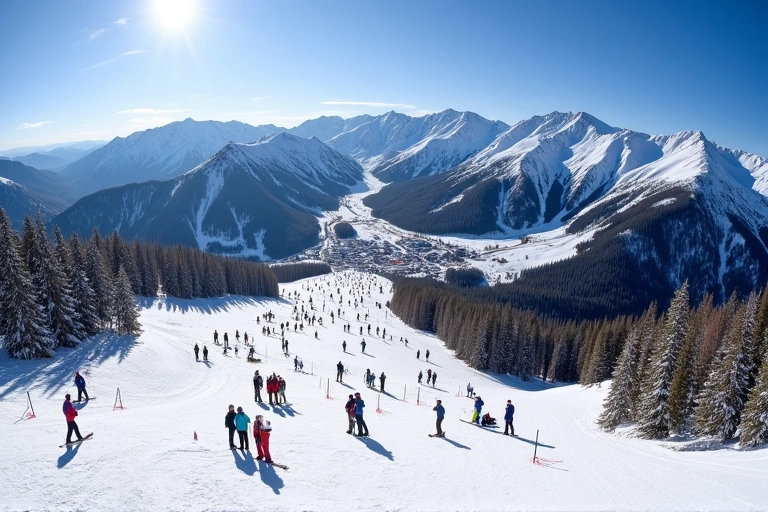
Each of these destinations offers a unique snowboarding experience, catering to different preferences from family-friendly slopes to extreme backcountry adventures.
Snowboarding Safety Tips
Safety is paramount when snowboarding. Following these guidelines will help ensure a fun and injury-free experience on the mountain:
- Wear a Helmet: This is the single most important piece of safety gear. Always wear a properly fitted, certified helmet to protect against head injuries, even on easy runs.
- Know Your Limits: Ride within your skill level. Don't attempt runs or features that are beyond your current ability. Progress gradually and seek professional instruction to improve.
- Check Bindings Regularly: Before each ride, ensure your bindings are securely tightened and properly adjusted to your boots. Loose bindings can lead to loss of control and injury.
- Respect Other Riders: The mountain is a shared space. Always be aware of people around you, especially those ahead. Yield to downhill riders and maintain a safe distance.
- Understand Terrain Park Etiquette: If you're in a terrain park, follow the rules. Look before you leap, start small, and use a spotter if necessary. Never hit features you're not ready for.
- Stay Hydrated and Fueled: Snowboarding is physically demanding. Drink plenty of water and eat regularly to maintain energy levels and focus.
- Dress Appropriately: Layer your clothing to adapt to changing weather conditions. Ensure your outer layers are waterproof and breathable. Wear warm, moisture-wicking socks and gloves.
- Avalanche Safety (for Backcountry): If you venture into ungroomed or backcountry terrain, you MUST have avalanche training, carry essential safety gear (beacon, shovel, probe), and ride with experienced partners. Check avalanche forecasts before you go.
- Stay on Designated Trails: Unless you are specifically trained and equipped for backcountry, always stay on marked trails and within resort boundaries.
- Never Ride Under the Influence: Alcohol and drugs impair judgment and reaction time, significantly increasing the risk of accidents.
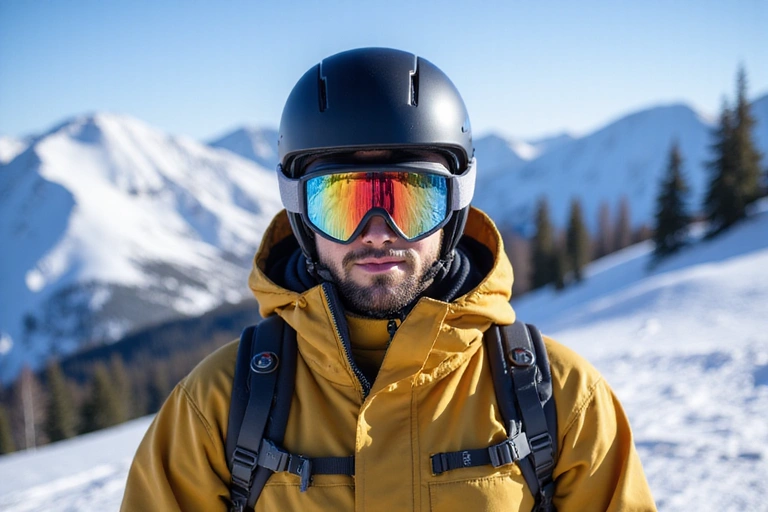
By adhering to these safety tips, you can minimize risks and fully enjoy the thrill and beauty of snowboarding.
Related Articles & Resources
Dive deeper into the world of snowboarding with these informative articles from our blog:
- Finding Your Perfect Snowboard Boot: A Comprehensive Guide – Learn how to choose the right boots for comfort, performance, and fit.
- Freestyle Snowboarding for Beginners: Your First Steps into the Park – Get tips and tricks for safely entering the exciting world of freestyle.
- The Art of Carving: Mastering Your Edges on the Snow – Improve your turning technique and feel the flow of a perfectly executed carve.
- Beyond the Groomers: An Introduction to Backcountry Snowboarding – Explore the thrill and challenges of off-piste riding (with crucial safety advice).
- Gear Up: The Latest Innovations in Snowboard Technology – Stay updated on new boards, bindings, and apparel that enhance your ride.

Our Blog / News section is regularly updated with new content to help you learn, improve, and stay informed about everything related to winter sports.